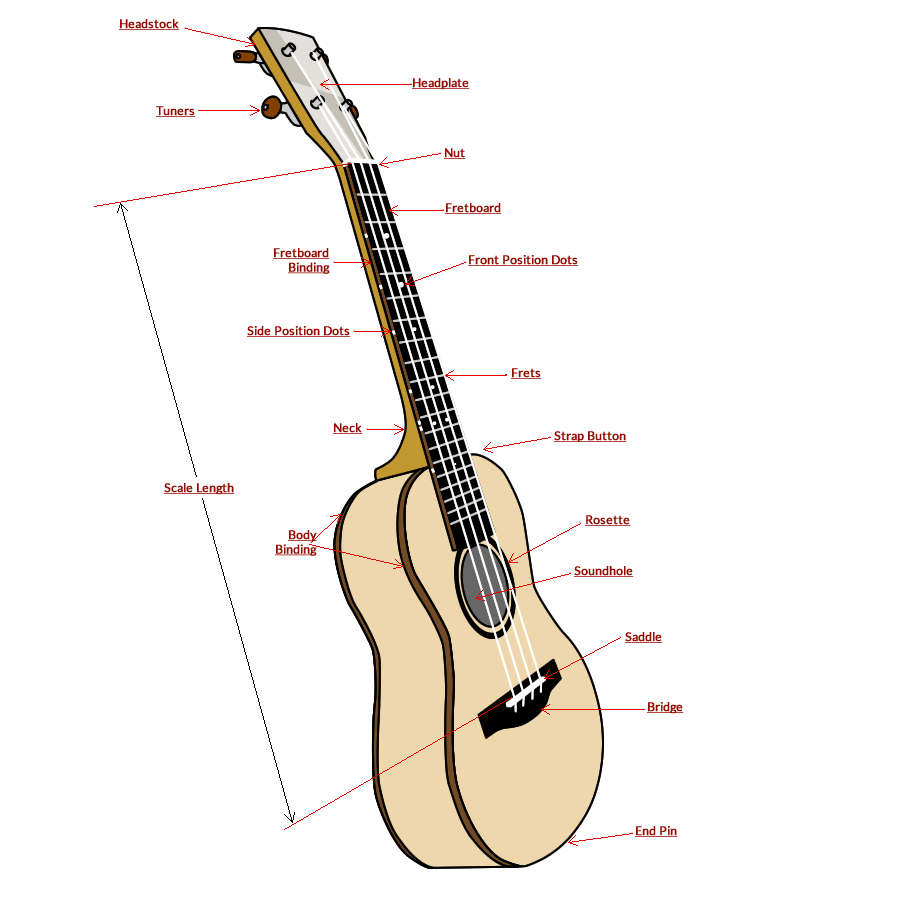the basics...
|
Parts of the ukulele |
|
Ukulele sizes |
Our necks are either made from mahogany or Port Orford Cedar. We inlay them with a carbon-fiber rod in order to increase stiffness.
The decorative strip which goes around the top & back of the instrument.
Also called "player dots" these give the player a reference point for their fingers. Mya-Moe ukuleles always have a full set of player dots.
A purely decorative strip that hides the fret end, which is called the "tang".
The strings attach to the tuners, and they are used to adjust the pitch of the strings. At Mya-Moe, we always use geared tuners as they are much more precise and they hold tune much better than friction tuners.
The headstock refers to all the wood at the end of the neck that the tuners attach to. It is angled so that the strings have sufficient break angle over the nut.
The headplate is the decorative overlay on top of the headstock. In the case of Mya-Moe, the "checkerboard" design is our signature, though we do offer a "matching" headplate option.
The nut is the small white piece, usually bone, that the strings pass over. There is a slot for each string to pass through.
On all Mya-Moe ukuleles, we radius the fretboard, making it much easier to play. Most ukuleles have flat fretboards.
These position markers are entirely aesthetic and some people choose to have them left off entirely, while others choose to have custom inlay work on the fretboard.
The small pieces of metal, usually nickel, that are on the fretboard. When you press a string in between the frets, it shortens the "scale length" and produces a note of higher pitch.
A small button, usually chrome, that the strap attaches to. (not visible in this illustration)
The purely decorative piece that goes around the soundhole.
The hole in the top of the instrument
which allows the sound to escape. Its size, in proportion to the size of the body is critical.
The saddle is the small piece of white material, usually bone, that the strings pass over.
The strings attach to the bridge, after passing over the saddle.
The strap attaches to the end pin. If the ukulele has a pickup, then the end pin is replaced by the pickup jack, which also serves as a strap attachement. (not visible in this illustration)
Scale Length is the distance between the "nut" and the "saddle". Shorter scale lengths mean less spacing between the frets, which can make it harder to fit in your fingers, but allows you to make longer chords reaches. The Soprano has the shortest scale length, while the baritone has the longest.


